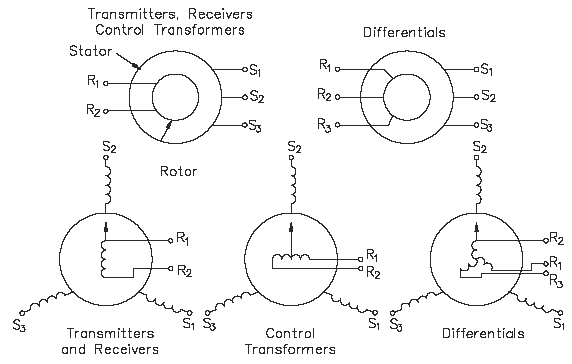Synchronizing Motors Review
Electronics, Instrumentation & Electrical Database
Synchronizing Motors Review
Remote indication or control may be obtained by the use of self-synchronizing motors, called synchro equipment. Synchro equipment consists of synchro units which electrically govern or follow the position of a mechanical indicator or device. An electrical synchro has two distinct advantages over mechanical indicators: (1) greater accuracy, and (2) simpler routing of remote indication.
There are five basic types of synchros which are designated according to their function. The basic types are: transmitters, differential transmitters, receivers, differential receivers, and control transformers. Figure T1 illustrates schematic diagrams used to show external connections and the relative positions of synchro windings. If the power required to operate a device is higher than the power available from a synchro, power amplification is required. Servomechanism is a term which refers to a variety of power-amplifiers.
The transmitter, or synchro generator, consists of a rotor with a single winding and a stator with three windings placed 120 degrees apart. When the mechanical device moves, the mechanically attached rotor moves. The rotor induces a voltage in each of the stator windings based on the rotors angular position. Since the rotor is attached to the mechanical device, the induced voltage represents the position of the attached mechanical device. The voltage produced by each of the windings is utilized to control the receiving synchro position.
